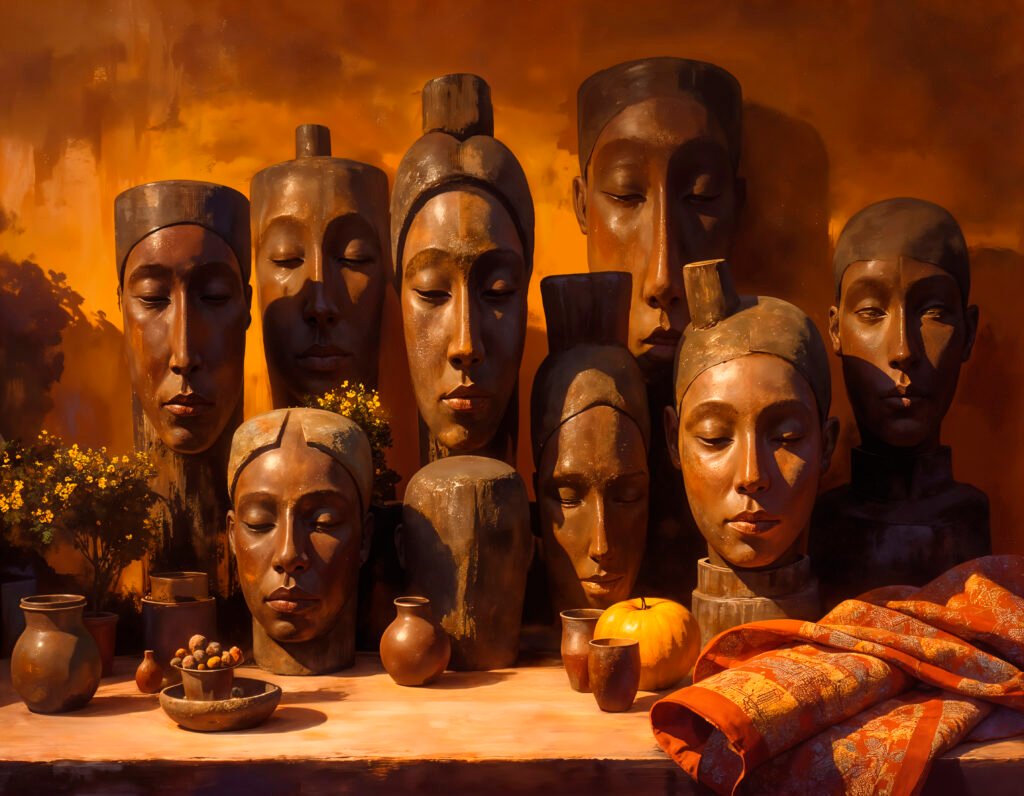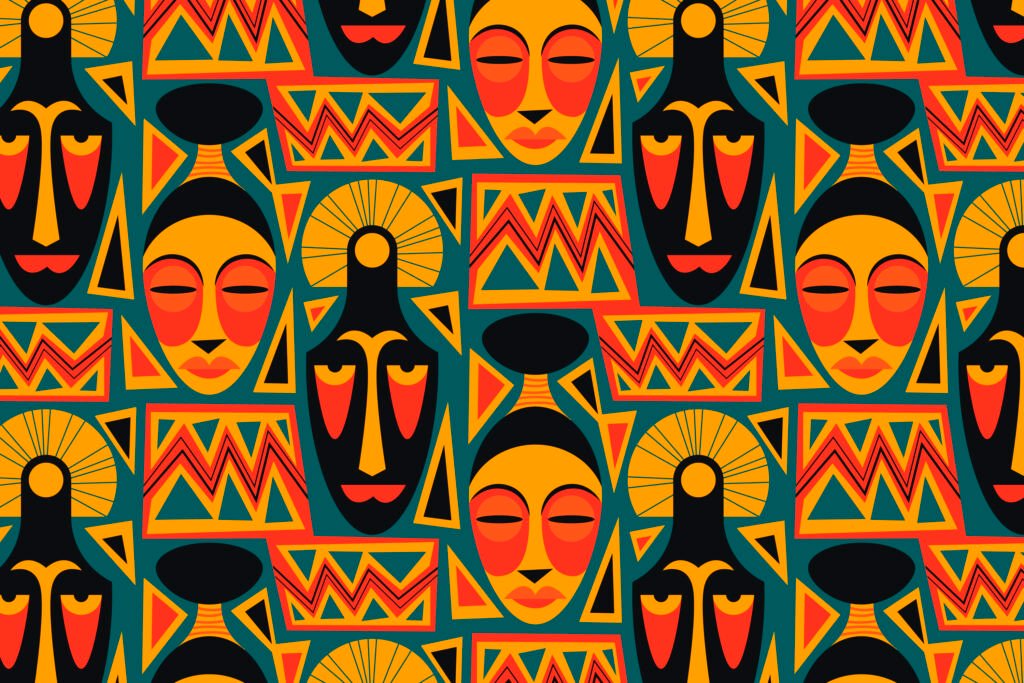Ancestral African art is far more than an aesthetic expression. It embodies a complex system of symbols, spirituality, rituals, and knowledge that have shaped—and continue to shape—the identity of countless African peoples. However, this ancient heritage is not confined to the past: its forms, meanings, and materials still echo powerfully in today’s global art scene.
Each traditional mask, sculpture, or painting carries deep meaning that speaks to both the spiritual and social realms. Today, contemporary African and diasporic artists reimagine these elements to explore identity, resistance, and belonging, blending the past and present into globally relevant creations.
Symbolic Heritage and Collective Memory
Ancestral African art is deeply connected to the daily lives and spirituality of various ethnic groups, such as the Yoruba, Bantu, and Ashanti peoples. In African Art (1984), Frank Willett emphasizes that many African objects were not made for decorative purposes, but for ceremonial, religious, or political use. Ritual masks used in funerals or initiations, for example, represented spiritual forces and ensured the continuity of collective memory.
Today, artists like El Anatsui and Yinka Shonibare reinterpret these traditions. Anatsui, from Ghana, creates metallic tapestries from bottle caps that recall African ceremonial fabrics. Shonibare, a British-Nigerian artist, uses industrial African textiles to critique colonialism and question African identity. Their works directly engage with ancestral legacies while challenging Western stereotypes about African art.
The Diaspora and The Rebirth of an Ancestral Aesthetic
The presence of African art today is also evident in the artistic production of the diaspora. Museums such as MoMA (New York) and Tate Modern (London) increasingly value artworks that incorporate African references through contemporary languages. African-American artist Kerry James Marshall, for example, explores the Black figure in historical and social contexts, often engaging with traditional African iconography.

In addition, the Afrofuturist movement revives ancestral visual codes to imagine possible Black futures. Artists like Wangechi Mutu merge traditional African aesthetics with surreal, technological imagery, offering new visions of African bodies and spirituality.
This reconnection with ancestry is not merely aesthetic but political. According to Postcolonial African Art (2014) by Sidney Kasfir, there is a growing drive for African artists to reclaim and reinterpret their visual histories with their own voices. This effort spans both the continent and the diaspora, forging symbolic bridges across generations, geographies, and media.
Ancestral African Art: Preservation, Recognition, and New Perspectives
International interest in African art has led to the creation of institutions dedicated exclusively to its study and display. The Zeitz MOCAA in Cape Town is a recent example of how the continent is reclaiming its own curatorial and exhibition spaces. With its monumental architecture, the museum is committed to promoting contemporary African artists while preserving their ancestral traditions.
Therefore, ancestral African art remains alive—not as an exotic relic, but as a creative matrix in expansion. Its symbols still pulse through bodies, canvases, and objects that transcend borders and eras. To engage with this art is to acknowledge that African ancestry belongs not only to the past, but also to the future of global art.



